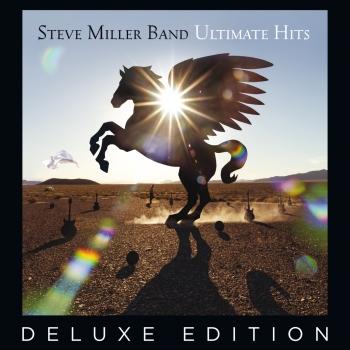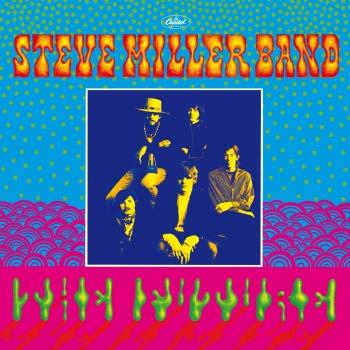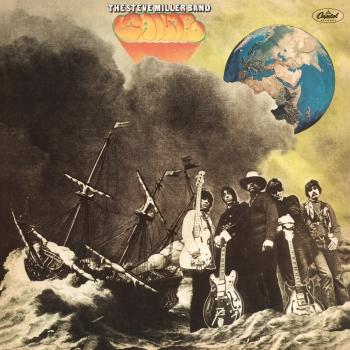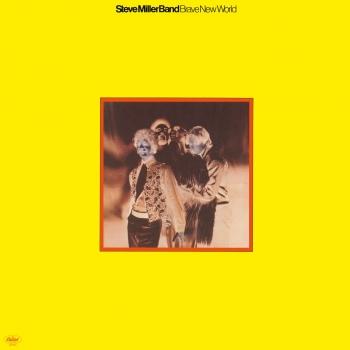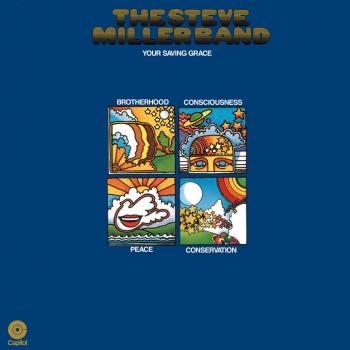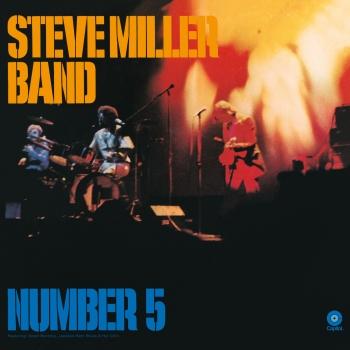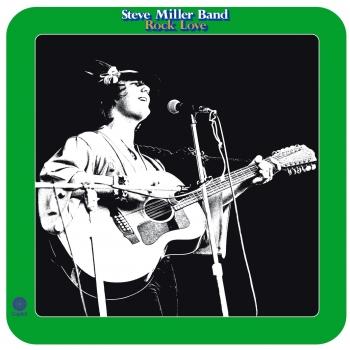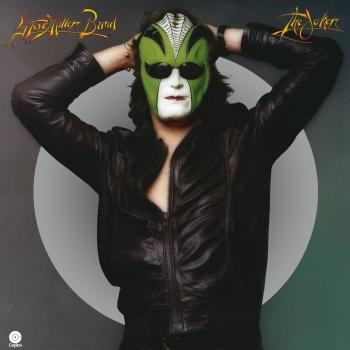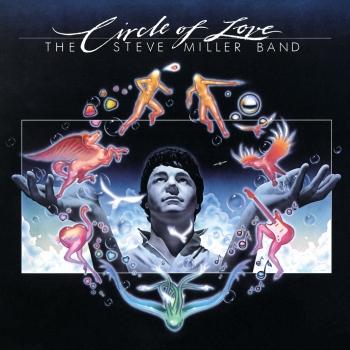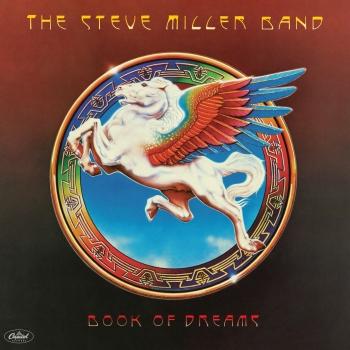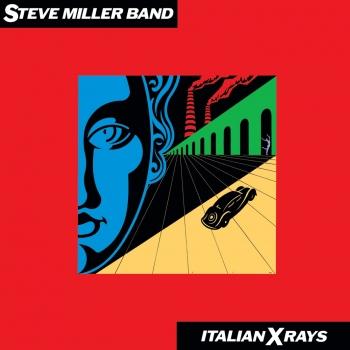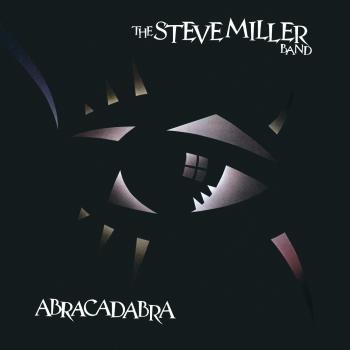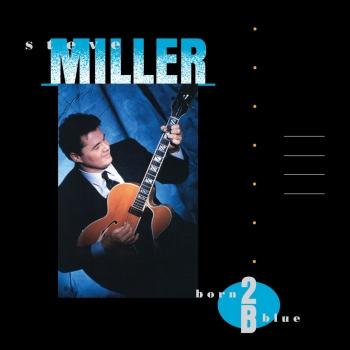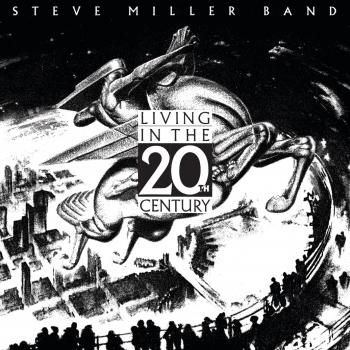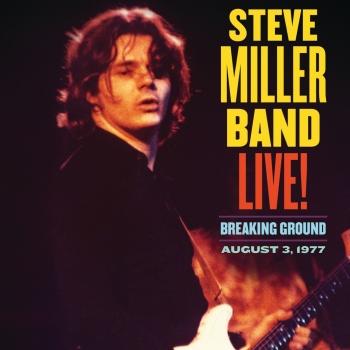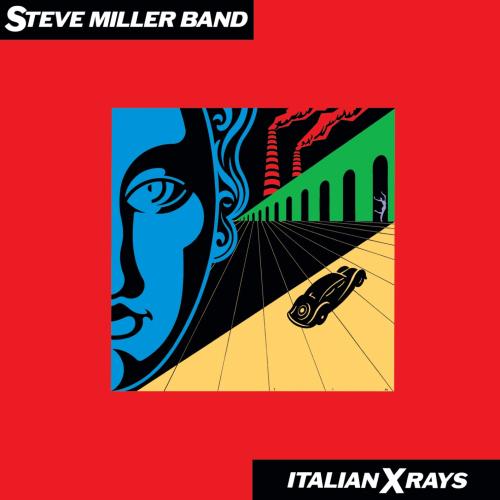
Italian X Rays (Remastered) Steve Miller Band
Album Info
Album Veröffentlichung:
1984
HRA-Veröffentlichung:
01.03.2019
Das Album enthält Albumcover
Entschuldigen Sie bitte!
Sehr geehrter HIGHRESAUDIO Besucher,
leider kann das Album zurzeit aufgrund von Länder- und Lizenzbeschränkungen nicht gekauft werden oder uns liegt der offizielle Veröffentlichungstermin für Ihr Land noch nicht vor. Wir aktualisieren unsere Veröffentlichungstermine ein- bis zweimal die Woche. Bitte schauen Sie ab und zu mal wieder rein.
Wir empfehlen Ihnen das Album auf Ihre Merkliste zu setzen.
Wir bedanken uns für Ihr Verständnis und Ihre Geduld.
Ihr, HIGHRESAUDIO
- 1 Radio 1 00:36
- 2 Italian X Rays 04:37
- 3 Daybreak 02:41
- 4 Shangri-La 05:03
- 5 Who Do You Love 02:54
- 6 Harmony Of The Spheres 1 01:46
- 7 Radio 2 00:36
- 8 Bongo Bongo 03:11
- 9 Out Of The Night 03:46
- 10 Golden Opportunity 03:31
- 11 The Hollywood Dream 03:50
- 12 One In A Million 03:41
- 13 Harmony Of The Spheres 2 00:54
Info zu Italian X Rays (Remastered)
Steve Miller Band's 13th studio album, released in 1984, contains the single "Who Do You Love" and "Out of The Night" which were co-written by Steve Miller and Tim Davis.
Steve Miller, vocals, guitar, Synclavier, keyboards
Kenny Lee Lewis, bass, guitar
Norton Buffalo, harmonica
Byron Allred, keyboards
Gary Mallaber, drums, percussion
Produced by Steve Miller
Digitally remastered
Steve Miller
The Gangster is back. The man some people call Maurice will release his new album, “Bingo!,” in June on his own Space Cowboy Records. Following his annual summer U.S. tour, in a new show designed by famed Broadway director Rob Roth (“Beauty and the Beast”), Steve Miller will do a European Tour this fall, including a triumphant concert at London’s Royal Albert Hall.
Miller will also appear in a special concert with guest country music superstar Kenny Chesney this summer on Country Music Television’s popular series, “Crossroads,” at Nashville’s Ryman Auditorium, home of the Grand Ole Opry.
One of rock music’s all time greats, the Steve Miller Band has sold more than 30 million records in a career spanning more than 40 years. His trademark blues-rock sound made him one of the key artists in classic rock radio. His band plays sold out shows every year across the country. The Steve Miller Band is brand name rock millions have come to trust.
Co-produced by Miller and engineer Andy Johns (Rolling Stones, Led Zeppelin), “Bingo” is the first album from ongoing recording sessions. A second album will be released next year from the sessions, which introduced new Steve Miller Band member Sonny Charles, veteran rhythm and blues vocalist of the Checkmates. These were also the final sessions by harmonica player and vocalist Norton Buffalo, Miller’s “partner in harmony” for 33 years, who died of cancer in October 2009.
“Bingo” echoes Miller’s days as an apprentice on the Chicago blues scene in 1964-6, where his Goldberg-Miller Blues Band worked the same territory as the Paul Butterfield Blues Band and the Siegel-Schwall Band. The fully realized work of a master craftsman, in a sense, “Bingo” is an album Steve Miller has been waiting all his life to make.
Born October 5, 1943 in Milwaukee, Wisconsin, Steve Miller grew up in a musical family. His mother, Bertha, was a gifted vocalist and his father, Dr. George (Sonny) Miller, was an amateur tape recordist. Steve’s uncle Dale Miller gave his four year-old nephew a guitar. His father’s friend, guitarist Les Paul, taught the young boy a few chords and his father secretly recorded the exchange. “Steve, you’re really going to go places,” Les Paul told him, after listening to the boy play and sing.
The family moved to Dallas, Texas when Steve was seven years old, where his father recorded a procession of visiting musicians in their living room; Charles Mingus, Tal Farlow, Red Norvo. Steve was allowed to stay home from school the day T-Bone Walker came to play for one of his parents’ parties and he remembers to this day the flesh-colored Cadillac convertible with the leopard-print seats in which the bluesman arrived. Walker showed the young guitarist how to play single-line solos.
At age 12, Steve formed his first band with fellow schoolmates from the prestigious Dallas private academy, St. Mark’s School of Texas, which they called the Marksmen. He taught his older brother to play bass so somebody could drive the band to the gigs. The Marksmen worked every weekend.
Growing up in Dallas, Miller saw country shows at the Big D Jamboree and rock and roll tours at the Sport-a-torium. He drenched himself in the latest rhythm and blues sounds nightly on the radio courtesy Jim Lowe’s Cat’s Caravan on WRR. The Marksmen drew their repertoire from the songbooks of Bobby Bland, Jimmy Reed, Bill Doggett and the other r&b stars of the day. During high school, Miller showed his friend Boz Scaggs a few chords on guitar and the rudiments of harmony vocals and Scaggs joined the band. When Miller went to the college in Madison Wisconsin, he started a new band called the Ardells and Scaggs joined that group a year later, after he followed Miller to the University of Wisconsin.
After falling just short of graduating in his senior year, Miller was drawn to the blues scene of Chicago, where he met Howlin’ Wolf playing in nightclubs and shared the bandstand with Muddy Waters. His own Goldberg Miller Blues Band took over for the pioneering Paul Butterfield Blues Band at Big John’s, where the college crowd met the blues on the North Side. The band signed with Epic Records and went to New York to promote the single, “The Mother Song,” appearing on TV’s “Hullabaloo” with the Supremes and the Four Tops. After finishing out the year in an extended run at a Manhattan nightclub, Miller returned to Chicago to find the scene on its last legs. He packed up a used Volkswagen bus and headed to San Francisco.
The Paul Butterfield Blues Band was headlining Winterland the night he arrived. He spent his last five dollars getting a ticket and joined his old Chicago pals onstage. When he announced he was moving to town and starting a band, the crowd gave him a standing ovation. It was the same night Grace Slick took over from Signe Anderson as female vocalist of the Jefferson Airplane, the other band on the bill.
Miller, living in his VW bus, located some like minded musicians and, during Thanksgiving weekend when the campus was empty, put together his group in a vacant basement room on the UC Berkeley campus. Within weeks, he landed a $500 date at the Avalon Ballroom and the Steve Miller Band was launched.
That fall of 1966, San Francisco was a burbling cauldron of music, social change and all kinds of creative madness. The Miller band appeared on bills at concerts with the Grateful Dead, Big Brother and the Holding Company, Quicksilver Messenger Service and all the acid-rock bands. He played on the Saturday afternoon program of the Monterey International Pop Festival in June 1967, just before the public debut of the new group by ex-Butterfield guitarist Mike Bloo0mfield, Electric Flag. His band’s performances that summer backing ‘50s rock and roller Chuck Berry at the Fillmore led to a live album together. His high school pal Boz Scaggs arrivfed in fall 1967 to play rhythm guitar in the group.
Signed to Capitol Records for a generous advance and unprecedented guarantee of creative freedom, Miller began recording the first album by the group at Olympic Studios in London with engineer Glyn Johns, fresh from sessions with the Beatles and the Rolling Stones. “Children of the Future,” with its landmark cover by San Francisco poster artist Victor Moscoso, was released in May 1968.
“Sailor,” the second album, released a quick five months later, was neither a new name for the band nor a concept album that was never completed (although Miller continues to operate under Sailor Music to this day). Recorded with Glyn Johns at Wally Heider’s new eight- track studios in Hollywood, the album featured the Miller classic, “Livin’ In the U.S.A.” that spent two whole weeks on the bottom reaches of the Billboard Hot 100 before dropping off entirely. Scaggs left the group shortly after the release. The album also introduced Miller as “The Gangster of Love” with his version of the Johnny “Guitar” Watson original. The next album, “Brave New World,” featured Miller as “Space Cowboy.”
Miller took the tapes of the third album to London to finish mixing with Glyn Johns and wound up tagging along to watch his co-producer record vocal overdubs with Paul McCartney and John Lennon on “Get Back” and “Don’t Bring Me Down” at Olympic Studios. The next night, the Beatles were supposed to record again, but Lennon and Ringo Starr never showed. After George Harrison left, Miller showed McCartney a new song of his and the two spent the rest of the evening recording the piece, “My Dark Hour.”
(Years later, the pair would collaborate again in the studio when Miller played and sang with McCartney on the 1997 album, “Flaming Pie.”)
The Steve Miller Band was a cornerstone of the burgeoning underground FM rock radio stations that were springing up across the country (when disc jockey Tom Donahue started the country’s first round-the-clock FM rock station in San Francisco, the first song he played was “Children of the Future”) and the Steve Miller Band headlined an endless circuit of psychedelic ballrooms from the Electric Circus in Philadelphia to the Grande Ballroom in Detroit. He did five albums in two years. The group went though many personnel changes. He recorded an album in Nashville with top sidemen. At one point, Miller was fronting a three-piece power trio. He was tired and disgusted when he found himself leaving for a European tour, while his producer brought in another guitarist to finish his seventh album, only to get in a car crash on his way to the airport.
Miller made the flight and started the tour, but, without knowing it, he had suffered a hairline fracture of his neck. Soon the pain made performing impossible. He canceled the tour and went back to live with his parents in Dallas for eight months while he recuperated. He returned to California, where he was jarred out of his depression almost by accident. A delivery man bringing firewood to Miller’s home asked if he could play Miller a tape of his music and, as the two of them sat and listened to the delivery man’s music, Miller realized the gift of his own life in music and started over again.
He gathered a band and entered the hallowed studios in the basement of the Capitol Tower in Hollywood, where they couldn’t start before midnight while the more important clients recorded through the daytime and evening hours. In nineteen days, Miller emerged with an album, “The Joker.” Given the sorry reception his records had almost uniformly received from Top 40 radio on all his previous albums, Miller never thought about hit singles, but “The Joker” was an instant anthem, a breakthrough smash that shot all the way to No. 1. He chased the chart success with another year of endless concerts and returned home to find the first substantial check he ever earned in the music business waiting for him in his mailbox. He immediately notified his astonished booking agent that he would be taking some time off, a year at least.
Miller bought a hilltop home surrounded by property on the remote edge of Marin County. He installed an eight-track studio in his living room. He spent the next year and a half writing, recording and polishing the pieces that would compose his next two albums. He paused for one performance – appearing with Pink Floyd before an audience of 100,000 at Knebworth Castle in England – playing with an impromptu group featuring his original Steve Miller Band bassist Lonnie Turner and drummer Doug Clifford of Creedence Clearwater. He wrote a number, “Rock ‘n Me,” specifically to perform before the enormous audience. Back home, he booked two weeks at CBS Studios in San Francisco in September 1975 with bassist Turner and drummer Gary Mallaber, who played “Moondance” with Van Morrison, and cut the basic tracks to both albums. He repaired to his living room studio to fuss over the tapes for months, before mixing the first album, “Fly Like An Eagle,” with engineer Jim Gaines in a marathon 48-hour session in a Seattle recording studio.
“Take the Money and Run,” the first single from the new songs, hit the charts in May 1976, the first of six consecutive smashes – “Rock ‘n Me,” “Fly Like an Eagle,” “Jet Airliner,” “Jungle Love,” “Swingtown” -- that would keep the Steve Miller Band in the Top Ten beyond the next two years. He followed the multi-million-selling “Fly Like An Eagle,” while the album still hovered high in the charts, with “Book of Dreams” almost a year to the day later.
He began the “Fly Like an Eagle” tour at the same small theaters he played as the hitless wonder and king of FM underground rock. By the next summer, he was playing football stadiums. At the height of the classic rock movement, the Steve Miller Band was one of the defining figures. His 1978 album, “Greatest Hits 1974-78,” became one of the best-selling releases of all-time, selling millions every year through the end of the century.
Miller scored another No. 1 hit in 1982 with “Abracadabra,” a number he put together with drummer Mallaber and SMB guitarist Kenny Lee Lewis. His 1986 single, “I Want To Make the World Turn Around,” was lodged at the top of album rock radio playlists for several weeks, from the album “Living In the 20th Century,” which was conceived, at least in part, as a tribute to one of Miller’s heroes, bluesman Jimmy Reed. His 1989 blues and jazz album, “Born 2B Blue,” not only reunited him with producer Ben Sidran, a former member of both the Steve Miller Band and the Ardells, but put Miller back on the road for the first time in several years.
In the intervening years, a new radio format called classic rock swept the radio dial in every city, with the Steve Miller Band records front and center on all the playlists. Miller’s return to performing was greeted by a new generation of fans, young people introduced by classic rock radio and weaned on “Greatest Hits 1974-8.” His last studio album, “Wide River,” went largely unnoticed in 1993, while his ‘70s hits were still on the radio everywhere, more popular than many hit records of the day.
The Steve Miller Band has become one of the centerpiece attractions of the summer rock concert season, playing sixty or more shows every year. He is the Gangster of Love. Some people call him Maurice, the Midnight Toker or the Space Cowboy. And with “Bingo,” a masterpiece album by one of the greats, Steve Miller shows he still speaks of the pompitus of love.
Dieses Album enthält kein Booklet










